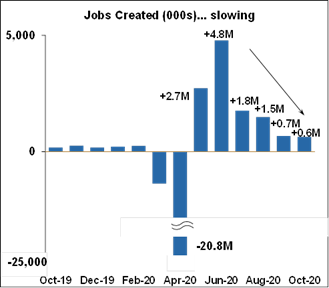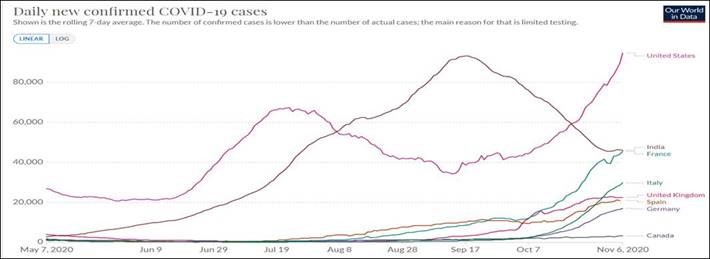US Election
Please note that this portion was written on Friday, November 6, 2020
Joe Biden is expected to speak tonight and declare victory as he is on the verge of winning three out of the four states still in play, which will push him over the 270 votes needed in the Electoral College to become President. Biden only needs to win one state. Trump needs to win all four states and he is leading in only one. It’s close to a certainty that Biden will win the race.
But while Biden may be able to claim the victory in the Electoral College, it’s not over yet, and it could go on for a while. Technically, the Electoral College doesn’t even meet until December 14th. And the Trump campaign, as expected, has filed several lawsuits over the validity of the elections in certain states. These lawsuits could be thrown out right away or they could drag on. The last contested election was in 2000, and it wasn’t legally “decided” by the Supreme Court until December 12th.
But let’s assume Biden wins, then what becomes really important is the Senate race which now looks like it will result in a Republican majority (but it’s irritatingly close). As my colleagues in Europe have noted, in the current situation, divided government may make it more difficult to coherently attack the COVID-19 crisis, and to get that desperately needed fiscal stimulus and income support package. Historically speaking though, divided government is the best configuration over the long term. It promotes the status quo which provides certainty, and the stock market does very well with certainty. And it usually means the economy does well too. A Republican Senate will likely result in more business-friendly conditions than a Democratic sweep would. Democrats ran on agenda of tax increases and more regulation, so a Republican Senate will check those efforts.
View Euler Hermes Scenarios of Contested Election.
US Employment Report
The October 2020 employment report was very strong all around. The economy gained 638,000 jobs vs expectations of 530,000, while the unemployment rate plummeted from 7.9% to 6.9%, much better than expectations of 7.6%. All industries except for one gained jobs. The single loser was educational services which shed an insignificant 22,000 jobs as some teachers have still haven’t returned to school. The labor force participation rate rose sharply, going from 61.4% to 61.7%. The employment/population ratio jumped from 56.6% to 57.4%; since this measure tells us the portion of the population that is working to fuel the economy, it’s a very good indicator of the health of the labor market and the economy in general. Overall, it’s a very solid report.
But we are still way in the hole, and slowing. October was the fourth consecutive month of slowing job gains. We have only recovered 12,070,000 of the 22,160,000 jobs lost in March and April or 54.5%. By comparison, the Canadian economy has regained 78.8% of the jobs lost there (more below). And job gains here in the US are likely to continue to slow for several reasons:
- The resurgence in COVID-19 (see below) will probably lead to some shutdowns again.
- Income is about to fall off a cliff for those receiving unemployment benefits (see last week’s email), so consumption will continue to slow, leading to less demand for labor.
- Temporary holiday hiring in November and December will be substantially less this year because of restrictions on brick and mortar stores. Seasonal adjustments could artificially hold down employment in retail in those reports.


























